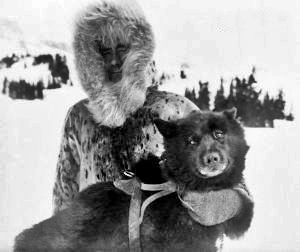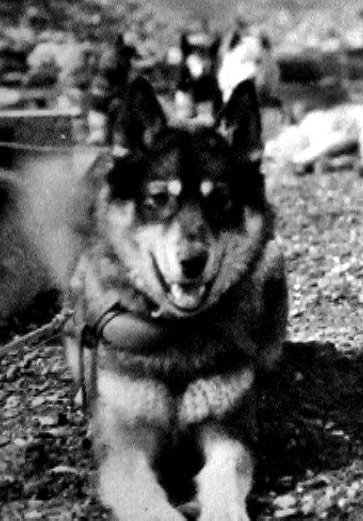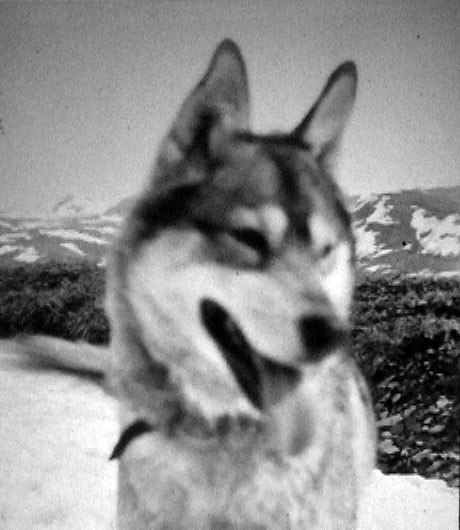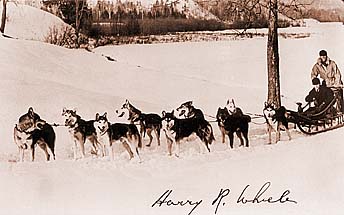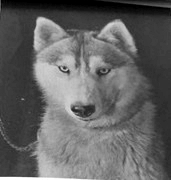|
|
|
|
Siberian Huskies originated in Northeast Asia where they are bred by the
Chukchi people of Siberia for sled-pulling, and companionship. Among the Chukchi, Siberian’s were raised in the dwelling by the women, the breedings controlled by the chief. The dogs were also used to look after the children, tied to one they kept them out of seal holes and safe. They were also used to help heat the Chukchi dwelling as part of the family and hence the saying “three dog night”, taking 3 dogs to heat the place up! A characteristic prized in the breed by the the Chukchi was the love of their family, team or pack personality, no matter who or what was part of their pack. For this reason, they can be at home with all kinds of animals, birds etc as part of their pack within the modern home. However, outside, any strange small animal like rabbits or squirrels are prey for them. Historically they would kill small animals as food for the family and not eat it themselves.
The Siberian ear can be rotated all around to hear the musher behind him when
in harness, forward to catch any noise in front and closed off completely to keep
blowing snow from entering. The Siberian’s feet are webbed to act like snowshoes and stay on top of deep
snow. The tail is big and fluffy, placed over the face and nose when curled up to sleep
will also warm the air, important in a bad snow storm or freezing temperatures. These are some of the great reasons that Siberians are great at what they do! William Goosak, a Russian fur trader, introduced Siberians to Nome, Alaska, during the Nome Gold Rush, initially as sled dogs. Dogs from the Anadyr River and surrounding regions of Eastern Siberia were carefully selected and imported into Alaska from 1908 onward for use as sled dogs, especially in the "All-Alaska Sweepstakes. Smaller, faster and more enduring than the 100- to 120-pound (45- to 54-kg) freighting dogs then in general use, they immediately dominated the Sweepstakes race. Chukchi dogs continued to be imported into Alaska until 1929. Leonhard Seppala, the foremost breeder of Siberian sled dogs of the time, participated in competitions from 1909 to the mid-1920s with many championships to his name.
Balto
| |
| ? X Mila | Ugruk X Liska |
|
|
|
| Suggen | Dolly |
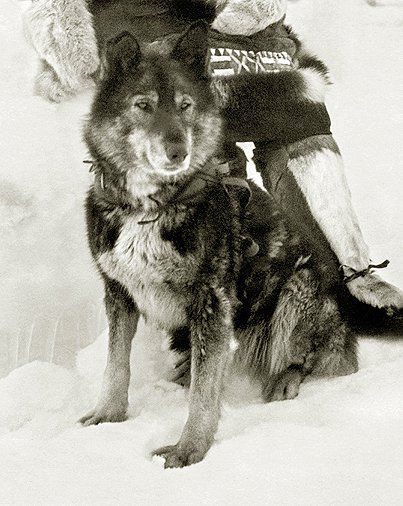
Pedigree |
|
|
"Togo" - 1913 |
|
| Born near Nome, Alaska (Little Creek) in 1913. Togo was 12 at the time of the Great
Serum Run when he was Sepalla's lead dog. Different sources have his birth year from 1913-1916. One of the foundation dogs of the breed.
Breeder: Leonard Seppala.
|
|
| Harry | Kolyma |
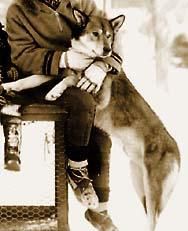
Pedigree
|
|
| "Bonzo" - 1925 | |
|
Foundation dog of the breed as well as champion racing lead dog for the Wheeler team. First Siberian to be registered with the CKC (1939). Owned originally by Elizabeth Ricker then by Robert Wheeler.
Wheeler Team of Grey Rocks Québec, led by Bonzo Breeder: Leonard Seppala.
|
|
|
The Siberian Husky was recognized by the American Kennel Club in 1930 and by the Canadian Kennel Club in 1939.
|
|
| Tserko | Dushka |
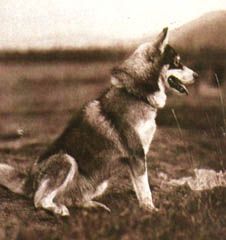
Pedigree |
|
| "Sapsuk Of Seppala" - 1931 | |
|
Sepalla Kennels of Harry Roberts Wheeler located at Gray Rocks Inn, St. Jovite Station, Quebec, Canada, was crucial to the development of the Siberian sled dog as well as to that of the Siberian Husky. It operated from 1930 to 1950. His dogs were obtained mainly from Leonard Seppella. Sapsuk of Sepalla was Wheeler's famous lead dog who had raced the 1934 and 1935 seasons on the Alec Belford team and was the son of Tserko the Siberia import. The eventual sale of dogs from the Wheeler kennel to New England buyers around 1950 was critical to development of the Siberian Husky breed in the USA. Sapsuk and others were sold to Marie Turner of Cold River Kennels. Other Wheeler dogs were sold to Don McFaul of Maniwaki, Québec who carried on the Seppala Kennels name and tradition until the 1960's. |
|
|
|
|
| Am Ch Turu Of Alyeska | Toska Of Wonalancet |
|
Pedigree |
|
|
"Ch. Wonalancet's Baldy Of Allyeska" - 1940 |
|
| Eva and Milton Seely's Chinook Kennels in
Vermont produced many influential foundation dogs of the breed as well as
racing champions of the day.
With his brother Disco was the first Siberians to win a Best in Brace in Group and Show.
|
|
| Ch. Wonalancet's Baldy Of Alyeska | Duchess Of Cold River |
| "Izok Of
Gap Mountain" - 1948
Pedigree |
|
|
William Belletete worked with sled dogs during WW II and was an avid racing enthusiast. His most significant dog was Duchess of Cold River, bred by Marie Frothingham. When bred to the Seelys' Ch Wonalancet's Baldy of Alyeska the result was Izok Of Gap Mountain. Bred by William Belletete Izok in turn was the Sire of the famous Mulpus Brook's The Roadmaster... |
|
|
|
|
| Izok Of Gap Mountain | BIS AM CH Aleka's Czarina |
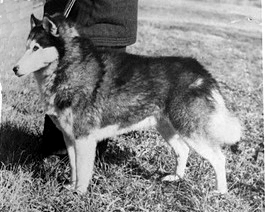
Pedigree |
|
| "Mulpus Brook's The Roadmaster" - 1954 | |
|
Although he was a striking dog and a prolific stud for many years, The Roadmaster (named after the latest Buick) entered the ring only once in Manchester NH where he contracted distemper and was left blind in one eye. Bred by Lorna Demidoff |
|
|
|
|
| Monadnock's Kolya | CH Monadnock's Nina |

Pedigree |
|
| "BIS AM CH Monadnock's Pando" - 1955 | |
|
Am Ch BISS--1957, 1958, 1959, 1960. He won 5 consecutive BOB at Westminster Kennel Club. BIS Brace with his son Ch Monadnock's King. Won 1st Veteran Dog Class when it was offered at the National in 1962. Was #1 Siberian in US in 1961 & 1962. Bred by Lorna Demidoff. |
|
| Alyeska's Wildwood Krystal | |


